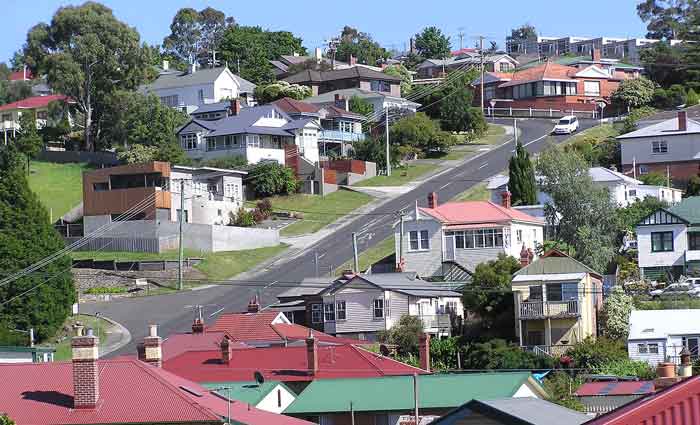Solid foundations for real estate growth in Hobart, Launceston and Devonport
Tasmania is a fine example of the adage that it’s easy to get a bad reputation but very hard to lose it.
The days of Tasmania being the basket case economy of Australia are gone, as are the days when investors steered clear of Hobart as a place offering no growth.
I’ve been advocating the merits of investing in Hobart for the past 18 months or so, based on the marked improvement in the state economy and the status of Hobart as the capital city with the lowest prices, tightest vacancies and highest rental yields.
Hotspotting’s regular research into sales activity has noted the rise in sales volumes in Hobart (and also in Launceston and Devonport) this year.
I’ve felt a bit like a voice in the wilderness, given that Hobart and Tasmania is a pretty hard sell. It’s very hard to shift entrenched attitudes, particularly as your average punter isn’t terribly well informed.
So how refreshing to see the latest research-based report from Simon Pressley of Propertyology.
He says: “Hobart is Propertyology’s tip to be Australia’s best-performed capital city property market in 2017."
“An under-rated economy, limited properties for sale, the tightest vacancy rates in Australia, a more controlled housing supply pipeline than mainland cities, and increased buyer activity are expected to drive property prices and rents higher.
“We have been actively investing in Hobart for a while and our buyer’s agents have observed first-hand price growth of 8 to 10 per cent over the past 12 months. We can only see buyer activity further intensifying and forcing stronger growth over the next couple of years.”
And Pressley makes this forecast for next year: “On an all-things-being-equal basis, double-digit price growth is well and truly on the cards for Hobart in 2017.”
He says the significant retraction in properties listed for sale has made it increasingly difficult for our buyer’s agents to find suitable properties for investors. “Properties are generally selling within a week of listing and often going for prices well above our own appraisal range. The market is red hot.”
All this is happening on the back of improving economic performance. There is now a long list of reports from name brands which have noted the improvement in the underlying fundamentals.
The latest to confirm that view is CommSec’s State of the States report, which notes Tasmania’s population growth is the fastest in five years and the state no longer ranks last overall.
“Tasmania has improved from 8th to 7th on the rankings,” it says. “Tasmania is 4th ranked on two indicators and 5th on three indicators. Annual growth on home lending is the strongest in the nation at 10.3%. Both home loans and home prices are lifting.”
State Treasurer Peter Gutwein says the report card is the best in five years. “But there is still a long way to go,” he says. He’s right, but a significant turnaround has been achieved already.
Another positive indicator for Tasmania is the level of infrastructure and construction work. The Deloitte Access Economics Investment Monitor report says: “The value of Tasmanian engineering projects under way has stayed well above $1 billion and there’s just under $1 billion worth of planned projects in the pipeline.”
The biggest under way is the $535 million Midland Hwy update. Work worth $239 million is ongoing on the freight rail revitalisation statewide and there is a $40 million extension of the Hobart Airport runway. The report says commercial building is also “coming along well,” with $1.5 billion worth of projects under way and a similar pipeline of planned work.
“The $689 million Royal Hobart Hospital project is still the largest project,” it says. “Planned work has been boosted, with University of Tasmania plans to move its science-technology-engineering building to Hobart’s CBD, at a cost of $400 million.”
The value of projects under way is up 27 percent to $2.9 billion. Adding planned projects, the total is $4.98 billion.
Tourism is big for Tasmania, with strong results for 2015-16. For the first time Tasmania had over one million interstate visitors, who spent $2 billion. Airline capacity rose by 173,658 new seats between the state’s two main airports and Melbourne, Sydney and Brisbane. TT-Line ran 33 extra day sailings over peak season, with visitors arriving on Spirit of Tasmania growing 17 percent.
In the 2015-16 summer, there were 59 cruise ship port calls in Tasmania — delivering 163,328 passengers and crew. Big growth in cruise ship visits is forecast for the next two seasons. The tourism industry supports 36,700 jobs or 15.3 percent of total jobs, and contributes $2.55 billion to the economy (10 percent of gross state product).
All of that provides a solid foundation on which real estate can continue to grow in Hobart, Launceston and Devonport.
Terry Ryder is the founder of hotspotting.com.au. You can email him or follow him on Twitter.
